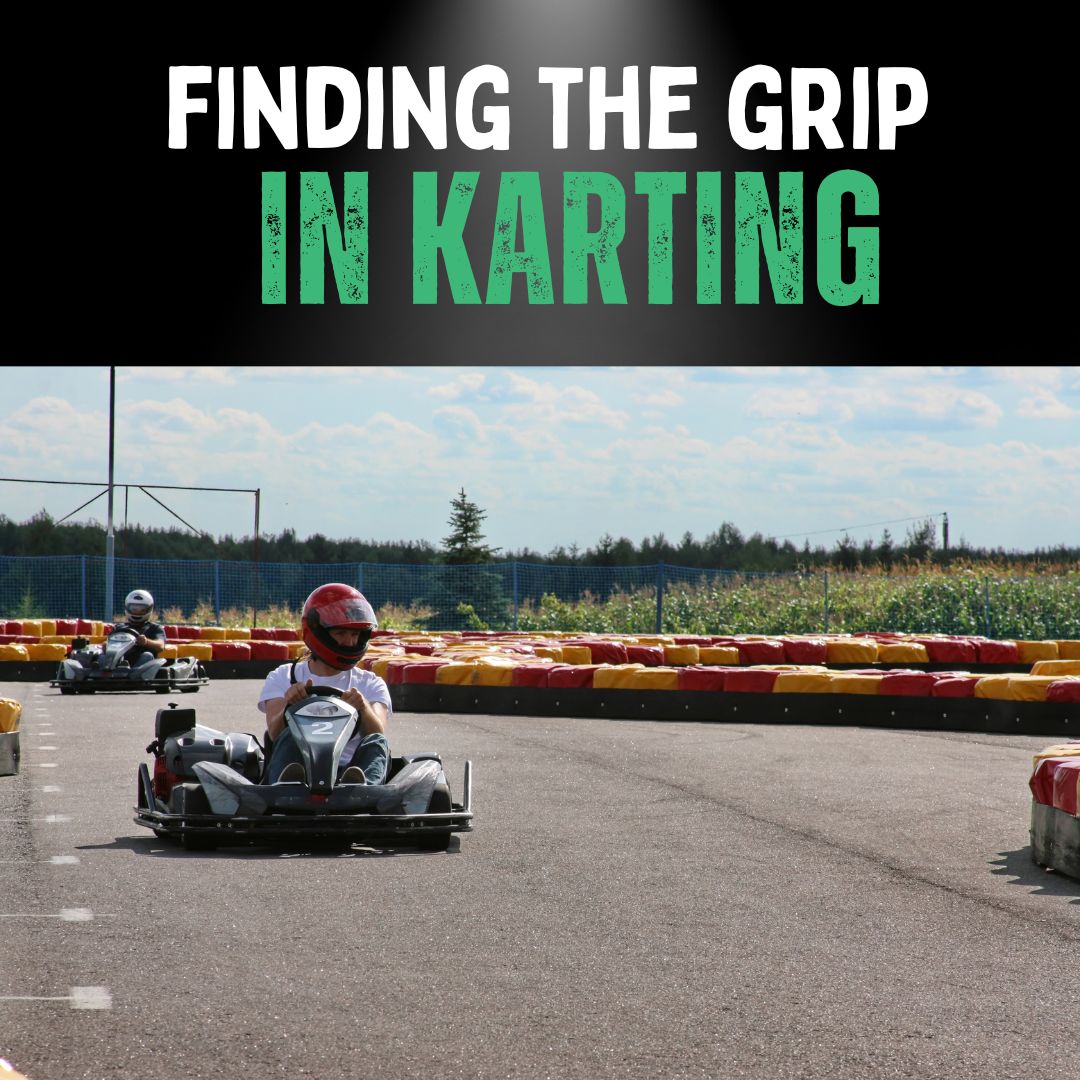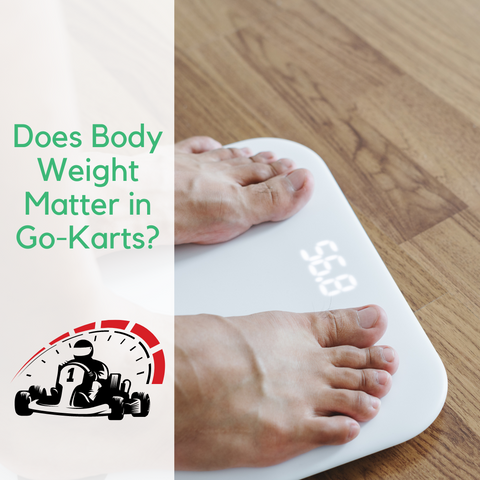Published: 31.01.24
Updated: 27.05.25
As the engines rev and anticipation builds, every karting enthusiast knows that mastering grip is key to a triumphant lap.
Whether you're a young racer or a seasoned driver aiming to shave seconds off your time, optimising karting grip on the track is essential.
This guide is your roadmap to mastering go-kart racing grip, refining techniques, and staying ahead of the curve.
1. The Essence of Grip in Karting
At the starting line, with excitement buzzing, grip is the linchpin of your karting performance. It ensures your go-kart stays steady during high-speed corners, enabling precise, confident turns.
2. Understanding Grip: The Foundation
The Role of Grip
Grip keeps your kart glued to the track, balancing inertia and traction for optimal speed and control in corners. Key factors include weather, track temperature, and rubber deposits.
| Factor | Impact on Grip |
|---|---|
| Weather Conditions | Affects track temperature and grip levels. |
| Track Temperature | Higher temperatures increase grip. |
| Rubber on Track | More rubber increases grip but becomes slick when wet. |
| Tyre Pressure | Lower pressure increases contact patch and grip. |
| Axle Stiffness | Stiffer axle reduces understeer in high-grip conditions. |
3. Racing Line and Seat Position: The Strategy
Perfecting Your Racing Line
The racing line and seat position are critical for maximising karting grip. On a dry track, follow a smooth arc where rubber is laid down, reducing sharp steering inputs for faster cornering.
Adjusting Your Line
In high-grip conditions, opt for a wider line into corners for a smoother exit, minimising understeer and allowing earlier throttle application.
4. Wet Track Considerations
Adapting to Wet Conditions
Wet tracks reduce grip, requiring softer steering, gradual acceleration, and a modified racing line to avoid slick rubber deposits. Mastering these conditions sets great drivers apart.
| Condition | Driving Adjustment |
|---|---|
| Wet Track | Use softer steering and avoid rubber deposits. |
| High Grip | Opt for wider lines and smooth throttle. |
| Low Grip | Increase tyre pressure and use a stiffer axle. |
5. Steering Inputs and Weight Transfer
Mastering Smoothness
Smooth steering, braking, and throttle inputs are vital in high-grip conditions to avoid upsetting the kart’s balance, which can cause understeer or oversteer. Hold the wheel at 9 and 3 for control.
Braking Techniques
Brake before corners to shift weight forward, enhancing front tyre grip. Modulate pressure to avoid locking wheels. Learn more at Go-Kart Tyre Tips.
Throttle Control
Apply power early in high-grip corners but roll on smoothly to prevent oversteer. Focus on the corner apex for precise exits.
Weight Transfer Management
Subtle weight shifts enhance cornering. Lean to the outside of turns to maintain traction. See Body Weight in Go-Karts.
Tyre Management
High grip increases tyre wear. Monitor conditions and adjust driving to preserve tyre life.
6. High-Grip Driving Techniques
Adapting to High Grip
High-grip tracks can cause ‘grip lock,’ reducing responsiveness. Adjust your technique to maintain momentum and avoid binding.
7. Detecting Sliding and Over-Grip
Finding the Balance
Learn to sense sliding or over-grip and adjust your driving to maintain speed. Explore drifting techniques.
8. Kart Setup Adjustments
Optimising Your Kart
A well-tuned kart enhances grip. Adjust tyre pressure, axle stiffness, and weight distribution for track conditions.
Tyre Pressure
Lower pressure boosts grip; higher pressure prevents binding in high-grip scenarios.
Axle Stiffness
A stiffer axle reduces understeer in high-grip conditions; a softer axle aids low-grip tracks.
Weight Distribution
Shift weight forward for front grip or rearward to manage oversteer.
Chassis Setup
Tune camber, caster, and toe for optimal handling and tyre contact.
Braking System
Adjust brake bias to balance front and rear grip.
Maintenance
Regular checks on bearings, hubs, and chassis ensure consistent performance.
9. Weather and Wind Effects
Weather’s Impact
Temperature, humidity, and rain alter grip. Hot tracks increase grip; wet tracks demand caution.
Wind’s Role
Crosswinds or headwinds affect handling. Adjust your driving to compensate.
10. Common Grip Mistakes
Avoiding Pitfalls
Avoid harsh braking, early turning, or inadequate tyre warm-up to maintain grip.
11. Beginner Challenges
Overcoming Hurdles
Beginners should practice in wet conditions and learn to read track changes to build grip confidence.
12. Detecting Oversteer and Understeer
Reading Your Kart
Oversteer (rear sliding) and understeer (front pushing wide) require quick adjustments for control.
Oversteer
- Steering: Steer into the slide to regain control.
- Throttle: Ease off or apply gently to stabilise.
- Weight: Shift inside to regain rear grip.
Understeer
- Steering: Reduce steering angle slightly.
- Brake/Throttle: Lightly brake or ease throttle for front grip.
- Weight: Lean forward to enhance traction.
Setup Adjustments
- Oversteer: Soften rear setup for grip.
- Understeer: Increase front grip via tyre pressure or track width.
The Ultimate Go-Kart Maintenance Checklist
Daily/Pre-Ride Checks
Monthly Maintenance
Quarterly Maintenance
Annual Maintenance
Storage and Protection
Download the free go-kart maintenance checklist.
13. 2025 Karting Trends
Karting evolves with cutting-edge trends shaping the sport.
Drifting Karts
Drifting karts with front-wheel drive and rear caster wheels add excitement to competitive and recreational events.
Electric Karts
Electric go-karts offer eco-friendly performance with advanced battery technology, gaining traction in racing circuits.
Kart Customisation
Customisation, from chassis tweaks to engine tuning, enhances performance and personal style.
Simulation and Gaming
Simulators like KartRider: Drift help drivers practice virtually, refining skills for real races.
14. Conclusion: Mastering Grip
Mastering karting grip blends technical knowledge, skillful driving, and a tuned kart. Understanding track and environmental dynamics elevates your performance.
Frequently Asked Questions
How can I improve my driving on a high-grip track?
Prioritise smooth steering and throttle inputs at 9 and 3 hand positions to avoid tyre saturation and maintain traction.
What should I do when my kart slips on the track?
Adjust kart setup, tweak hubs and axles, and maximise weight on the outside rear tyre during cornering for better grip.
How can I maintain speed through corners without losing grip?
Use smooth steering, focus weight on the outside rear tyre, and adjust your racing line to optimise karting grip.
What are common mistakes that affect grip?
Avoid harsh braking, early turning, inadequate tyre warm-up, and failing to adapt to high-grip conditions.
How can beginners improve grip management?
Practice in wet conditions, read track changes, and focus on smooth inputs to build grip confidence.
Get in Touch 🚀
Loved our guide on optimising karting grip? Explore more at RiiRoo.com.
Got questions about kids’ ride-on toys? Try our Live Chat or check out our kids’ go-karts.









Share:
Understanding Go kart Track Conditions
Go Kart Racing Nutrition and Fitness